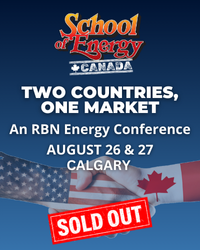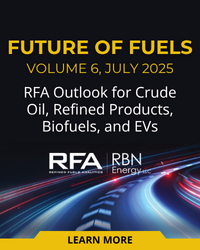If you’ve filled up the tank in your car, SUV, or pickup in the past few days, you probably bought your first batch of winter-blend gasoline since the spring. It’s unlikely that you noticed a difference — only a refining geek with a nose for this sort of thing would — but winter gasoline has a higher Reid Vapor Pressure than summer gasoline, and therefore evaporates more quickly and emits more fumes. There’s a logic to EPA’s mandated switchover from lower-RVP gasoline to higher-RVP gasoline each September, and their switch back to lower-RVP each April/May. For one thing, using different gasoline blends during the colder and warmer months helps ensure that your engine runs well year-round; for another, reducing gasoline vapor pressure in the summer reduces emissions that contribute to smog. Today, we discuss gasoline RVP, why it matters, and how refineries ramp it up and down. (A hint is in the blog’s title.)
Like oxygen, electricity, and a good internet connection, we all tend to take gasoline for granted nowadays. Open gas cap, insert credit card, pick octane level — somewhere between 85 and 93, depending on the vehicle you drive and the region you live in — stick nozzle in the tank, and squeeze-and-lock the trigger. But there’s a lot more to the gasoline that we depend on than you might think, including the fact that gasoline is actually composed of a long list of hydrocarbons that refiners blend up to meet mandated specifications for octane, RVP, and sulfur (see Down Gasoline Alley for more on sulfur and the Tier 3 mandate). Like alchemists, refiners mix and match an assortment of ingredients, each with different properties and costs. Among other blendstocks (naphtha, isomerate, pyrolysis gasoline, raffinate), the blend pool notably includes:
- FCC gasoline, the primary product of a refinery’s fluid catalytic cracker (FCC) unit, which has octane and RVP levels similar to finished gasoline but is high in sulfur;
- Light, straight-run naphtha, which has low octane levels and is inexpensive but has higher RVP than the summer limitation;
- Alkylate, which is high in octane and low in RVP and sulfur — everything that refiners want — but is very pricey;
- Reformate, another relatively expensive gasoline blending stock; it is produced via catalytic reforming and has high octane, low sulfur, and low RVP. However, it also is high in aromatics, a quality that comes with some limitations of its own.
Join Backstage Pass to Read Full Article










